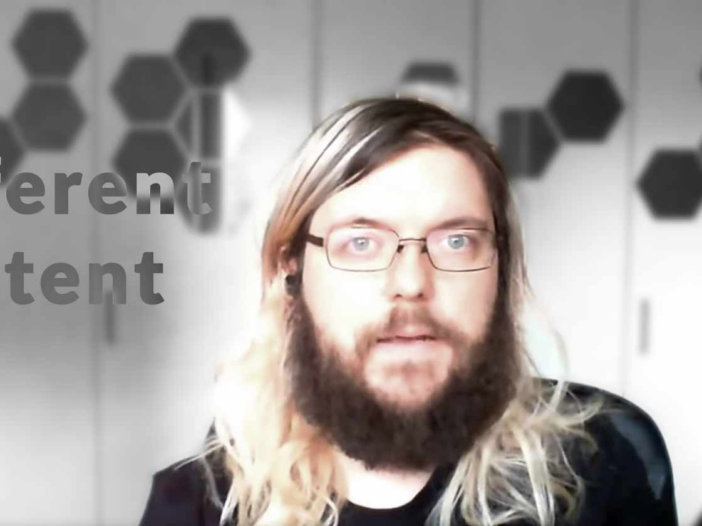
Download your copy of SEO Trends 2025 and discover what to be hopeful about in a changing search world.
Join us in analyzing 3 case studies that show the importance of driving brand search behavior and engagement, and how to do it in months, instead of years.
Download this guide and learn how to optimize and manage Google Performance Max campaigns, with expert insights and actionable strategies to ensure your campaigns are effective.
Join us in analyzing 3 case studies that show the importance of driving brand search behavior and engagement, and how to do it in months, instead of years.
Join us in analyzing 3 case studies that show the importance of driving brand search behavior and engagement, and how to do it in months, instead of years.
Join us as we dive into exclusive survey data from industry-leading SEOs, digital marketers, content marketers, and more to highlight the top priorities and challenges that will shape the future of search in 2025.
In a recent JavaScript SEO Office Hours, Google’s Martin Splitt was asked to define what constituted cloaking.
Splitt discussed different ways that it was OK for content to be different and still not be considered cloaking.
The publisher asked about the “gray line” between cloaking and not cloaking.
“Can you go into more detail what is considered as cloaking and what’s not? Where’s the gray line?”
Cloaking is showing Google a page of content and showing users a different page of content.
Splitt indicated there are different levels of cloaking where one form is acceptable and another is not.
A gray line is by definition a murky area.
An example can be like dusk, where it’s neither day or night, so what part of dusk is night and what part is day?
There may have been a language issue and what the publisher may have intended was to know is where the line is that can’t be crossed.
Martin Splitt answered:
“Where’s the gray line I can’t do much in terms of giving too much detail for that.
But fundamentally cloaking means misleading the user.
That means if I see a Googlebot is requesting my website and say this website is about kittens and butterflies and then when it’s a user going to that website (instead of Googlebot) having… like an online drugstore or trying to sell knockoff products, so something like that.
That would be very much against the intention of the user and that would not match what we would show in search results if the user searches for cute kitten or something like that.
So that’s very very clearly cloaking.”
Splitt followed up with describing scenarios where showing different content is okay.
This is how Splitt explained it:
“What isn’t cloaking is if my website content is slightly different. Because we all know that with responsive web design we might have slightly different content to begin with.
On a mobile phone I might only load one product instead of ten products… and then have the user click through multiple pages or something like that.
That’s not cloaking. That’s just slightly different content depending on what the browser can do or what the device capabilities are, that is fine.”
That’s great to hear.
I know with forum software publishers are able to assign forum permissions to bots in order to keep them from seeing off-topic sub-forums that exist for social bonding and not for the core topic of the entire forum.
For something like that an admin can restrict non-registered users as well as Google.
That way, the content is the same for Google and non-registered users and never rank in Google at all.
Yet it can still exist for registered users.
So that’s a case that in my opinion should be fine according to how Splitt defines it.
Ultimately the line between cloaking and not cloaking is defined by if a publisher is misleading someone who is searching on Google.
Here’s how Splitt wrapped up his answer:
“If you show slightly different content for Googlebot than for real users like notification or a pop-up that doesn’t show when Googlebot comes in that is mostly fine.
Unless it is like a pop-up that has ninety percent of the content in it and on the actual page it is only an image, then we are again like… uhmmmm… does t hat still fall within like the user sees what the user expects or what we saw as Googlebot?
But generally speaking as long as you’re not misleading the user you’re definitely on the safe side.
What you shouldn’t be doing is you should’t be misleading your user.”
So it could be said that the line between bad cloaking and not cloaking in terms of what will get penalized, as long as you’re not misleading users then having content that is a little different is OK.
Anything that is within reasonable bounds of that is not a problem.
I have 25 years hands-on experience in SEO, evolving along with the search engines by keeping up with the latest …
Conquer your day with daily search marketing news.
Join Our Newsletter.
Get your daily dose of search know-how.
In a world ruled by algorithms, SEJ brings timely, relevant information for SEOs, marketers, and entrepreneurs to optimize and grow their businesses — and careers.
Copyright © 2024 Search Engine Journal. All rights reserved. Published by Alpha Brand Media.